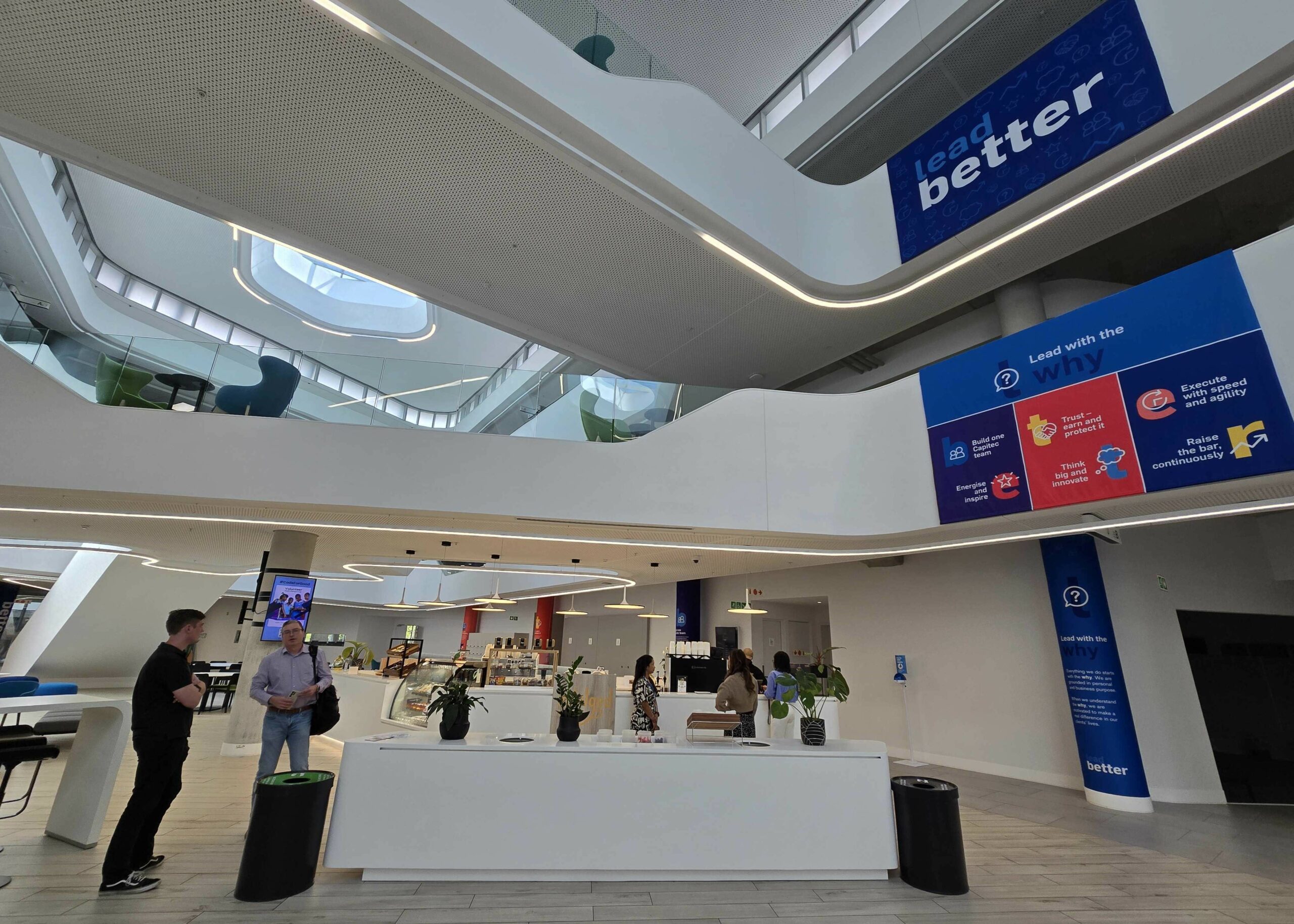Fintech
Capitec reveals low-tech secret of high-tech banking
A visit to the spaceship-like HQ of South Africa’s fastest-growing bank revealed a startling but obvious strategy, writes ARTHUR GOLDSTUCK.
The first thing that strikes any visitor to Capitec Bank’s gleaming headquarters at Techno Park in Stellenbosch is that it looks like a spaceship and would not have been out of place in Silicon Valley. The building’s sleek, flowing lines make this an apt metaphor for a forward-thinking organisation that has blindsided the entire retail banking industry.
Founded as the 21st century was getting under way, it reported last month that it had passed the 23-million customer mark, making it by far the biggest bank by clients in the country. The key to its success does not lie in architecture, but that sense of flow reflects the way the organisation’s divisions are deeply integrated into a unified platform.

Inside Capitec Bank headquarters in Stellenbosch. Photo: ARTHUR GOLDSTUCK
And these are not tiny entities.
For example, the bank’s mobile virtual network operator (MVNO) division, Capital Connect, has signed up more than 1.3-million users in two years. Capitec Insurance generated R3-billion profit in the 2024 financial year, with 2.7-million active Funeral Plan policies.
Now Capitec is going after the business banking world, having rebranded its Mercantile Bank acquisition as Capitec Business. More significantly, it has fully integrated this and other divisions into a single app for business and personal banking.
The real secret of success of these integrations, however, is not in presenting the semblance of a unified digital interface for diverse divisions, as is the case with many banks. The secret sauce is that there are no divisions between these divisions in the first place.
“Every single person in Capitec, regardless of which product you work on, is incentivised by the same multiplier,” says Gerhard Hayes, divisional executive for value-added services. In other words, a unified approach keeps everyone focused on the bigger picture, rather than competing for territory and customers.

Dalene Steyn, head of Capitec Connect. Photo: ARTHUR GOLDSTUCK
Dalene Steyn, head of Capital Connect, puts it concisely: “The goal was to make Capitec a better bank, not to become the biggest telco. 90% of transactions on Capitec Connect are done through the Capitec app.”
Francois Viviers, group executive for marketing and customer experience, says the app has transformed the bank’s relationship with customers.
“We moved from where, a couple of years ago, Capitec was relevant once, maybe twice a month, when you received your salary, and you queued at the ATM to draw your cash or your debit orders landed.
“We’re now in a space where we see clients log into the app every day, whether it is to buy their airtime, their data, to send cash, bill payments, or license renewals. We’re becoming the platform that helps them to get things done in a way that’s simple and transparent.”
Andrew Baker, chief technology officer, says it is all about moving away from the concept of “core banking”, which sees systems revolve around traditional banking products
“If you’re a technologist, core banking is weird,” he says. “It doesn’t make sense. It’s just a bunch of products lumped onto a mainframe. Every time I hear a competitor is doing a core banking upgrade, I’m amazed. I know that I’ll see it in five years with R20-billion on their balance sheet.
“So we will have products and domains, and we will integrate with those things in the same way. All the products are exiting core banking: credit is leaving core banking, savings is leaving core banking, and this is going to be a ledger thing.”
It would seem counter-intuitive, then, that Capitec is the only bank still expanding its branch network in South Africa.
While many banks are closing branches, Capitec is leveraging its branch network to distribute affordable card machines to small merchants, helping them transition from cash to digital payments. It’s a move that bridges the digital and physical worlds, demonstrating a nuanced understanding of the South African market.
* Arthur Goldstuck is CEO of World Wide Worx and editor-in-chief of Gadget.co.za. Follow him on social media on @art2gee.



















